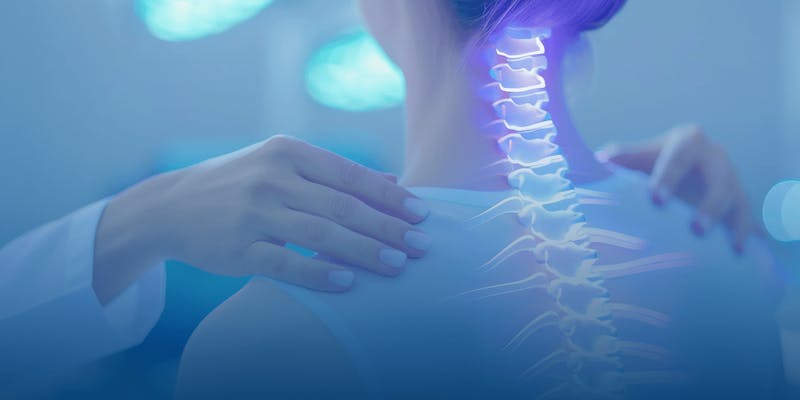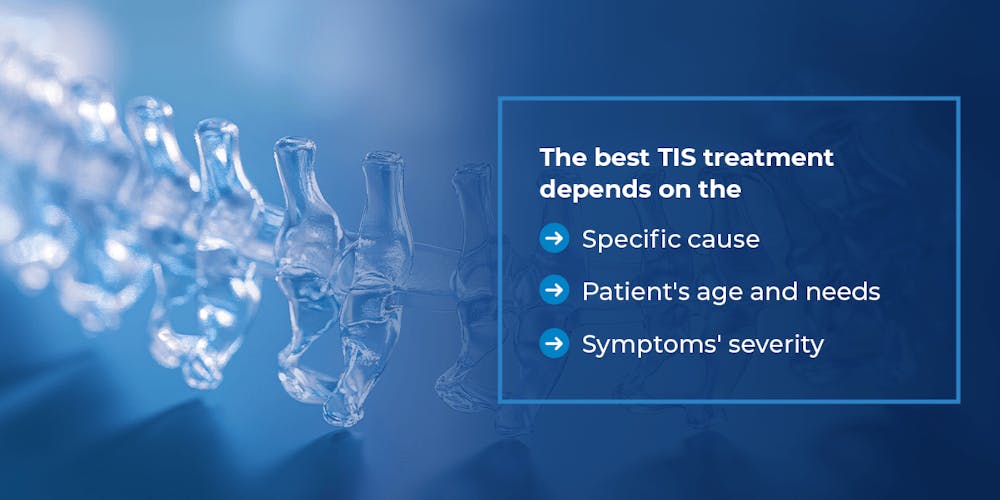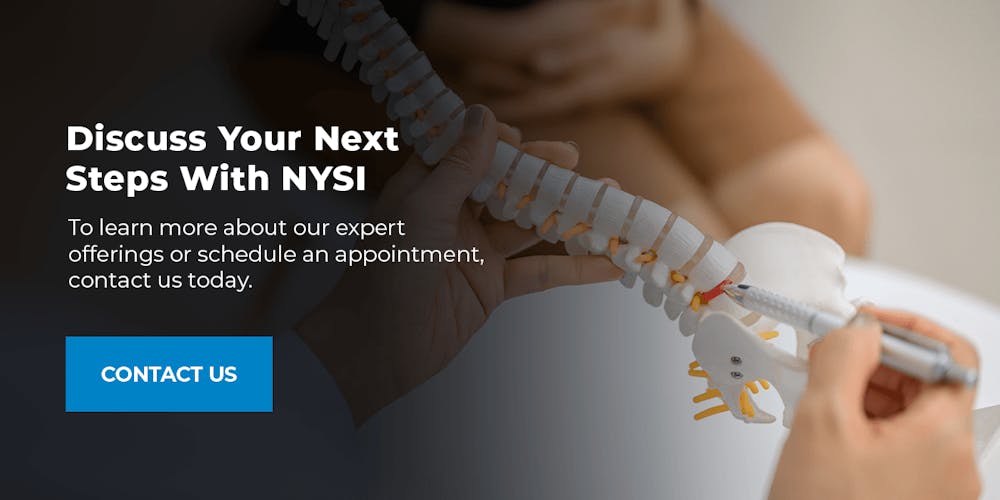
Living with TIS can be a challenging, complex journey. Both children and adults with TIS need expert support and ongoing care from qualified medical professionals to live their best, most comfortable lives. Our guide provides clarity on causes, symptoms and treatments.
What Is Thoracic Insufficiency Syndrome?
TIS occurs when musculoskeletal abnormalities around the chest or “thorax” limit the lungs’ ability to grow during childhood and function properly later in life, hindering normal respiration and breathing.
The alveoli — the air sacs that exchange oxygen for carbon dioxide in the lungs — develop primarily during a child’s first five years of life. With limited space to grow, fewer alveoli can form. If rib cage size is restricted, the lungs also can’t expand enough, causing discomfort and other symptoms.
Symptoms of Thoracic Insufficiency Syndrome
If you’re living with thoracic insufficiency, you may experience one or more of these symptoms because of your reduced chest cavity size:
- Shortness of breath
- Difficulty exercising
- Chest pains
- Fatigue
- Short stature
- Cyanosis (bluish tinge to skin)
- Wheezing or labored breathing
- Difficulty inhaling deeply
Causes of Thoracic Insufficiency Syndrome
There are several causes for TIS. Some are genetic, some are environmental and some are multifactorial, meaning the syndrome is caused by a combination of factors. If you have TIS, you likely have a condition that falls into one of the following four categories:
1. Abnormal Spinal Curvature
When the spine twists or bends more significantly than usual, it can limit space in the chest cavity or “thoracic cage” and cause ribs to grow compressed or misaligned, hindering breathing. Spinal conditions that can cause TIS include:
- Congenital scoliosis: This sideways curvature of the spine begins in the womb when vertebrae first form.
- Infantile idiopathic scoliosis: Infantile idiopathic scoliosis develops in infants after birth for unknown reasons.
- Jarcho-Levin syndrome: This genetic disorder is characterized by short stature and spinal and rib deformities.
- Kyphosis: This excessive outward curvature of the spine is caused by developmental conditions or degenerative diseases.
2. Rib Malformations
Abnormal rib development can restrict lung growth and impede the rib cage from expanding properly during breathing. Malformations that can cause TIS are:
- Severe rib fusion: People with ribs that are partially or completely joined together can have reduced chest cavity volume.
- Absent ribs: Babies born with fewer than 24 ribs can have smaller thoraxes and reduced lung capacity.
- Jeune syndrome: This condition causes children to develop a narrow chest and rib cage, often limiting lung growth.
- Cerebrocostomandibular syndrome: The ribs in newborns with this syndrome are malformed, often restricting lung expansion.
3. Neuromuscular Conditions
Neuromuscular conditions can lead to muscle weakness, spasticity and spinal deformities, which contribute to TIS by restricting respiratory capacity and space within the thorax. Conditions include:
- Cerebral palsy: Often caused by brain injury, genetics or developmental problems, this condition can result in muscle tone issues that lead to postural problems like scoliosis.
- Muscular dystrophy: This group of genetic disorders causes progressive muscle weakness. Duchenne muscular dystrophy particularly weakens respiratory muscles.
- Spinal muscular atrophy (SMA): SMA is a genetic disorder that affects motor neurons, resulting in muscle weakness, including those used to breathe and support the rib cage.
4. Other Disorders
Several other disorders also contribute to thoracic insufficiency through structural or developmental issues:
- Osteogenesis imperfecta type III: This genetic disorder causes collagen defects, leading to fragile bones, fractures and compromised spine and rib structure.
- Bone dysplasia: Bone dysplasia disorders affect bone growth and can cause the thorax to develop abnormally, restricting chest wall movement.
- Goldenhar syndrome: This congenital condition can cause rib malformations and other skeletal issues, potentially leading to restricted lung growth.
- Spina bifida: Spina bifida is when an infant’s spinal column doesn’t close completely in the womb. It can affect spinal formation and rib positioning.
How Is Thoracic Insufficiency Syndrome Diagnosed?
To diagnose TIS, doctors will review your medical history, assess your symptoms and conduct a thorough physical examination to evaluate your posture. Medical practitioners will also use imaging studies like X-rays to assess spinal curvature and rib structure. Computed tomography (CT) scans also give doctors detailed information about the structure of your thoracic cavity.
Next, you’ll do pulmonary function tests (PFTs) to measure how well you breathe in different circumstances, including during exercise. If doctors suspect a genetic condition, you may undergo genetic testing. Depending on your results, you’ll be referred to specialists such as spine surgeons, orthopedic surgeons or pulmonologist.

How Is Thoracic Insufficiency Syndrome Treated?
The best TIS treatment depends on the specific cause, the patient’s age and needs and the symptoms’ severity. Usually, a combination of treatments or a multidisciplinary approach has the best outcomes. Regular follow-ups help prevent the condition from worsening and manage secondary symptoms. Treatments for TIS include:
Physical Therapy for Mild TIS
Most physical therapy for TIS focuses on strengthening core muscles, enhancing flexibility and improving overall mobility. Specific exercises may target respiratory muscles to strengthen lung function. Physical therapists also teach patients breathing techniques to help maximize their lung capacity and manage any TIS-related discomfort.
Bracing for Scoliosis and Kyphosis
Young people with minor to moderate spinal curvature conditions, like scoliosis restricting thoracic expansion, can benefit significantly from orthotic braces. These custom-fitted, wearable braces gradually guide the spine into a more upright position as the child or adolescent grows, helping prevent further curvature and opening up the chest over time to make room for lung growth and proper respiration. Types of back braces used to treat spinal curves that cause TIS include Boston braces and Rigo-Chêneau braces.
Orthotic braces are generally only effective in young people who have growing skeletons and a scoliosis curvature between 25 and 40 degrees. The best type of brace for your needs will depend on numerous factors that doctors will assess and monitor as treatment continues. Surgery is typically advised for scoliosis patients who:
- Have spinal curvatures over 40 degrees.
- Are older than their mid-teens.
- Are experiencing significant discomfort.
- Aren’t responding to more conservative treatments like physical therapy.
Surgical Interventions
Surgery for TIS has three main goals — increasing the thorax’s volume to facilitate better lung growth in young people, adjusting skeletal structure to make breathing easier and helping breathing muscles like the diaphragm engage better via spine and rib cage adjustment. Procedures are divided into two types — growth-sparing, which helps young people continue to grow taller after surgery, and non-growth-sparing, which often limits growth.
Growth-sparing TIS surgeries include:
- Vertical expandable prosthetic titanium rib (VEPTR): VEPTR is a surgical device implanted to expand the thoracic cavity and provide adjustable support for growing children. It’s particularly effective in treating rib deformities or severe scoliosis without compromising future growth.
- Growing rods: These surgical implants can be adjusted periodically to accommodate growth. They are attached to the spine and can be lengthened through outpatient procedures, allowing for continued spinal growth, providing stability and correcting deformities.
- Spinal stabilization procedures: Certain stabilization procedures may involve placing instrumentation to support the spine without fusing vertebrae. These techniques can help correct deformities while preserving spinal mobility and growth potential.
Non-growth-sparing TIS surgeries include:
- Spinal fusion: Two or more vertebrae are fused to correct severe spinal deformities, stabilize the spine and improve thoracic shape.
- Rib reconstruction or resection: This procedure helps correct rib malformations or removes fused ribs.
- Thoracoplasty: Thoracoplasty changes the thorax’s shape to create more space for lung expansion.
Minimally Invasive Procedures
In these procedures, medical practitioners use smaller incisions than in traditional open surgery, reducing recovery time, scarring, pain and bodily trauma. These procedures require specialized instruments and imaging technology. Minimally invasive TIS procedures include:
- Magnetic expansion control (MAGEC) system: This growth-sparing technique uses magnetic rods to gradually lengthen the child’s spinal rod. The rods can be adjusted externally using a magnet.
- Video-assisted thoracoscopic surgery (VATS): During this growth-sparing procedure, surgeons make small incisions and use endoscopic high-definition cameras to help correct rib deformities or other thoracic issues.
Symptom Management
If you’re having significant trouble breathing, you may receive respiratory support, such as supplemental oxygen or noninvasive ventilation assistance. You may also be prescribed pain-relieving or muscle-relaxant medications to help you manage symptoms and complications associated with TIS, such as chest pains or chronic back muscle spasms. Families affected by genetic syndromes, like muscular dystrophy or Jarcho-Levin syndrome, can also get genetic counseling for future pregnancies and management options.
Why Trust Us With Advice, Diagnosis and Treatment?
New York Spine Institute has become the state’s largest, most comprehensive multi-specialty spine and orthopedic institute. Our industry-leading doctors and surgeons specialize in spine treatment, neurosurgery, orthopedics, pain management, physical therapy and sports medicine. NYSI is highly equipped to address the various facets of TIS, from diagnosis to treatment.
If you’re concerned about TIS or want a reliable second opinion before committing to treatment, we can help you find answers and start your journey to recovery. Our centers treat patients in New York City and surrounding areas. It’s our mission to relieve your pain and improve your quality of life using cutting-edge surgical and nonsurgical technologies.
Discuss Your Next Steps With NYSI
To learn more about our expert offerings or schedule an appointment, contact us today.

